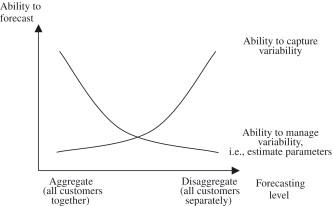As global trade continues to expand and evolve, the need for accurate and reliable logistics forecasting has never been more critical. From predicting shipping volumes to anticipating potential supply chain disruptions, aggregate forecast logistics plays a crucial role in ensuring the smooth and efficient movement of goods around the world. In this article, we will delve into the complexities of transport and shipping forecasting, exploring the methodologies and tools that professionals in the industry use to stay ahead of the curve. Join us on a journey through the intricate world of aggregate forecast logistics, where data-driven decisions pave the way for success in a rapidly changing market.
Key Components of Aggregate Forecasting in Logistics
When it comes to aggregate forecasting in logistics, there are several key components that play a crucial role in ensuring smooth operations and efficient transportation of goods. One of the main components is historical data analysis, which involves analyzing past trends and patterns to predict future demand. By looking at previous sales and shipment data, logistics companies can gain valuable insights into consumer behavior and market fluctuations.
Another essential component is collaborative planning, which involves working closely with suppliers, manufacturers, and distributors to accurately forecast demand and coordinate shipments. This collaborative approach helps in streamlining the supply chain process and reducing lead times. Additionally, technology integration such as advanced forecasting software and automated systems can further enhance the accuracy of aggregate forecasting in logistics, leading to improved efficiency and customer satisfaction.

Effective Strategies for Optimizing Transport in Aggregate Forecasting
When it comes to optimizing transport in aggregate forecasting, it is crucial to implement effective strategies that will streamline logistics processes and ensure timely delivery of goods. One key strategy is to invest in state-of-the-art transportation management systems (TMS) that can help automate and optimize routing, scheduling, and tracking of shipments. By utilizing TMS, companies can reduce transportation costs, improve delivery times, and enhance overall operational efficiency.
Another effective strategy is to establish strong partnerships with reliable carriers and logistics providers. By working closely with trusted partners, businesses can benefit from competitive rates, increased capacity, and better service levels. Collaborating with carriers that have a strong track record of on-time deliveries and efficient operations can help mitigate risks and ensure a smooth flow of goods throughout the supply chain. Additionally, implementing a robust carrier performance management system can help monitor and evaluate carrier performance, identify areas for improvement, and drive continuous optimization in transport operations.

Best Practices for Managing Shipping in Aggregate Forecasting
When it comes to managing shipping in aggregate forecasting, there are several best practices that can help streamline the process and ensure efficient logistics. One key practice is to establish clear communication between all parties involved in the forecasting and shipping process. This includes regular updates on inventory levels, production schedules, and any potential disruptions that may impact shipping timelines.
Another important practice is to optimize transportation routes to minimize costs and improve delivery times. This can involve consolidating shipments, utilizing multi-modal transportation options, and leveraging technology to track shipments in real-time. By implementing these best practices, businesses can enhance their shipping processes and improve overall forecast accuracy.
Insights and Conclusions
In conclusion, aggregate forecast in logistics, transport, and shipping plays a crucial role in ensuring efficiency and cost-effectiveness in the supply chain. By using advanced analytics and technology, companies can better predict demand, optimize inventory levels, and improve overall operations. By incorporating aggregate forecasting into their strategy, businesses can stay ahead of the competition and adapt to ever-changing market conditions. As the industry continues to evolve, embracing these forecasting techniques will be essential for success. Thank you for reading!
